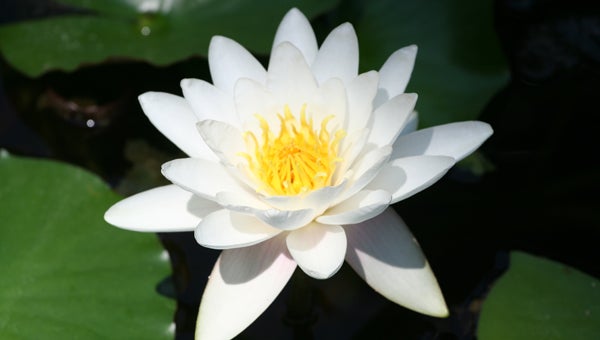Fragrant water lily is multipurpose flower
Published 3:19 pm Monday, August 10, 2015

Oak Mountain State Park is home to the fragrant water lily, a perennial plant that often forms dense colonies in shallow lakes, ponds and permanent slow-moving waters. (Contributed)
By EMILY D. COOK / Community Columnist
Have you ever noticed the beautiful white, pink or yellow flowers floating in the water near the shore of a few of the lakes here?
If so, let me tell you a little bit about them. If not, you can learn about them here and then visit the park to look at them.
They are known as the fragrant water lily. The fragrant water lily is a perennial plant that often forms dense colonies, and it can commonly be found in shallow lakes, ponds and permanent slow moving waters throughout North America where it ranges from Central America to northern Canada.
It is found commonly in the lakes of Oak Mountain State Park.
The leaves are more round than heart-shaped, bright green, 6 to 12 inches in diameter with the slit about 1/3 the length of the leaf.
Leaves usually float on the water’s surface. Flowers arise on separate stalks and have brilliant white petals (25 or more per flower) with yellow centers.
The flowers may float or stick above the water and each opens in the morning and closes in the afternoon.
The flowers are very fragrant. Submerged portions of all aquatic plants provide habitats for many micro and macro invertebrates.
These invertebrates in turn are used as food by fish and other wildlife species (e.g. amphibians, reptiles, ducks, etc).
Deer, beaver and other rodents will consume the leaves and rhizomes of white water lily, while the seeds are eaten by ducks.
The fragrant water lily has both edible and medicinal properties; however, do not eat it or use it unless you know a positive ID and how to exact what is needed.
The seeds, leaves, flowers and rhizomes can all be eaten.
The rhizomes were also used by first nations to treat coughs and colds.
The stem could be used to treat toothaches if placed directly on the tooth.
Pretty cool, right? Many of our plants are edible or medicinal.
Come visit Oak Mountain to see the fragrant water lily.
Please remember that you keep Alabama State Parks open by visiting them. To learn more about Oak Mountain, visit Alapark.com/oak-mountain-state-park.









